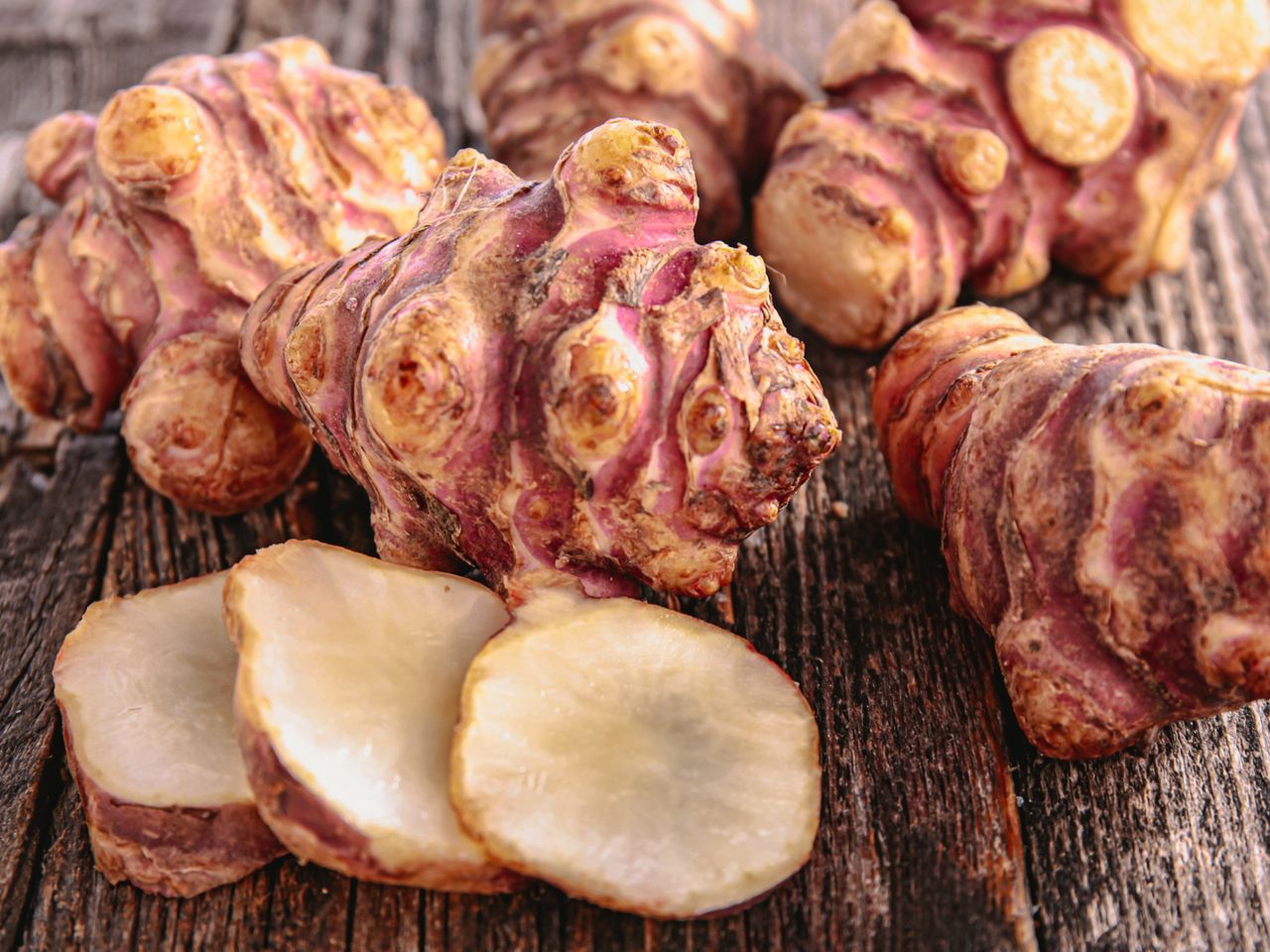
Topinambur, also known as Jerusalem artichoke, is a fascinating root vegetable that often flies under the radar. Despite its name, it’s neither from Jerusalem nor an artichoke. This tuber is actually a type of sunflower native to North America. Its nutty flavor and crunchy texture make it a versatile addition to many dishes. But what makes topinambur truly special? Topinambur is packed with nutrients, including iron, potassium, and fiber. It’s also a great source of inulin, a type of prebiotic fiber that supports gut health. Whether you’re a foodie looking to experiment or someone interested in healthy eating, topinambur offers something unique. Ready to learn more? Let’s dig into 15 intriguing facts about this underrated gem!
Key Takeaways:
- Topinambur, also known as Jerusalem artichoke, is a versatile and nutritious tuberous root vegetable that is not related to artichokes. It is rich in inulin, low in calories, and can be enjoyed raw or cooked in various dishes.
- Native to North America, Topinambur has a rich history and cultural significance. It is easy to grow, thrives in various climates, and produces beautiful yellow flowers. It was used by Native Americans and introduced to Europe in the 17th century, symbolizing resilience.
What is Topinambur?
Topinambur, also known as Jerusalem artichoke, is a tuberous root vegetable. Despite its name, it has no relation to Jerusalem or artichokes. This unique plant offers numerous benefits and interesting facts.
-
Topinambur is Native to North America
Topinambur originated in North America and was cultivated by Native Americans long before European settlers arrived. -
Not Related to Artichokes
Despite its name, Topinambur is not related to artichokes. It belongs to the sunflower family. -
Rich in Inulin
Topinambur contains high levels of inulin, a type of fiber beneficial for gut health. Inulin helps promote the growth of beneficial bacteria in the digestive system.
Nutritional Benefits of Topinambur
Topinambur is packed with nutrients that can contribute to a healthy diet. Here are some of its nutritional benefits:
-
Low in Calories
Topinambur is low in calories, making it an excellent choice for those looking to maintain or lose weight. -
High in Potassium
This tuber is rich in potassium, which is essential for maintaining healthy blood pressure levels. -
Good Source of Iron
Topinambur provides a good amount of iron, which is crucial for the production of red blood cells and preventing anemia.
Culinary Uses of Topinambur
Topinambur can be used in various culinary applications. Its versatility makes it a favorite among chefs and home cooks alike.
-
Can Be Eaten Raw or Cooked
Topinambur can be consumed raw in salads or cooked in various dishes. Its nutty flavor adds a unique taste to meals. -
Used in Soups and Stews
Topinambur is often used in soups and stews, where it adds a creamy texture and rich flavor. -
Popular in European Cuisine
Topinambur is particularly popular in European cuisine, especially in countries like Germany and Italy.
Growing Topinambur
Growing Topinambur is relatively easy, making it a popular choice for home gardeners.
-
Thrives in Various Climates
Topinambur can grow in a wide range of climates, from temperate to subtropical regions. -
Low Maintenance Plant
This plant requires minimal care, making it ideal for novice gardeners. -
Produces Beautiful Flowers
Topinambur plants produce bright yellow flowers that resemble sunflowers, adding aesthetic value to gardens.
Historical and Cultural Significance
Topinambur has a rich history and cultural significance in various parts of the world.
-
Used by Native Americans
Native Americans used Topinambur as a staple food source and for medicinal purposes. -
Introduced to Europe in the 17th Century
European explorers brought Topinambur back to Europe in the 17th century, where it quickly gained popularity. -
Symbol of Resilience
Topinambur is often seen as a symbol of resilience due to its ability to thrive in poor soil conditions and harsh climates.
The Final Scoop on Topinambur
Topinambur, also known as Jerusalem artichoke, is a fascinating root vegetable with a rich history and impressive health benefits. Packed with inulin, it’s a great choice for those looking to manage blood sugar levels. Its versatility in the kitchen makes it a favorite among chefs and home cooks alike. Whether roasted, mashed, or added to soups, topinambur brings a unique flavor and texture to dishes.
Beyond its culinary uses, this tuber is also a powerhouse of vitamins and minerals, contributing to overall well-being. Its potential in promoting gut health and aiding digestion adds to its appeal. So, next time you’re at the market, consider giving topinambur a try. It’s not just a tasty addition to your meals but also a step towards a healthier lifestyle. Happy cooking!
Frequently Asked Questions
Was this page helpful?
Our commitment to delivering trustworthy and engaging content is at the heart of what we do. Each fact on our site is contributed by real users like you, bringing a wealth of diverse insights and information. To ensure the highest standards of accuracy and reliability, our dedicated editors meticulously review each submission. This process guarantees that the facts we share are not only fascinating but also credible. Trust in our commitment to quality and authenticity as you explore and learn with us.


